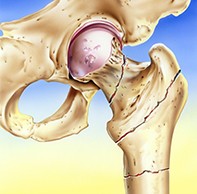Peer Reviewed
Feature Article Geriatrics
Getting patients back on their feet after a hip fracture
Abstract
Hip fracture is a potentially devastating condition for older people. Although the initial treatment is surgical repair of the fracture, a long-term multidisciplinary management approach involving the patient’s GP is required to maximise recovery and ensure secondary prevention strategies are implemented.
Key Points
- Over 90% of patients who sustain a hip fracture are older than 65 years and many have multiple coexisting medical conditions.
- After initial surgical repair of a hip fracture, a long-term multidisciplinary management approach involving GPs is required to maximise patient recovery.
- At each follow-up opportunity after hip fracture, GPs should assess the patient’s functional recovery.
- Secondary fracture prevention, including falls prevention, management of osteoporosis, sarcopenia and frailty, is an integral part of long-term care.
- Acute or chronic hip pain after surgery must be addressed, and ongoing exercise is important to improving long-term functional outcomes.
- An orthopaedic surgeon’s assessment should be sought urgently if a prosthetic hip joint infection is suspected, and antibiotics should not be commenced before orthopaedic consultation.
Picture credit: © John Bavosi/SPL
Purchase the PDF version of this article
Already a subscriber? Login here.

